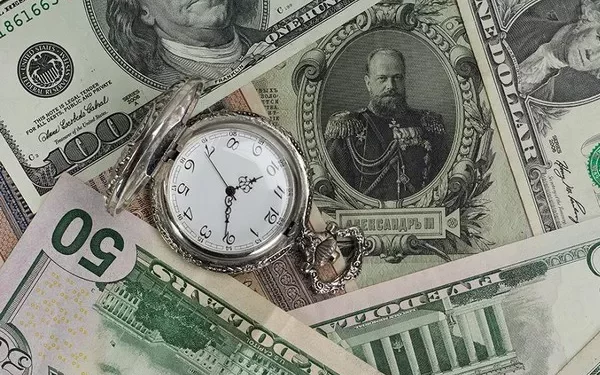Overview and History
The history of United States currency denominations is a fascinating journey through the evolution of paper money. From its humble beginnings to the modern era, these denominations have seen significant changes in design and value. This article delves into the largest denominations of United States currency, answering the question: What is the largest US dollar denomination?
Can You Get a $500 Dollar Bill from the Bank?
One of the most commonly asked questions regarding large denominations is, “Can you get a $500 dollar bill from the bank?” The answer is no. The $500 bill is no longer in circulation and has not been for several decades. In fact, it is extremely rare to find one in circulation today. These bills were officially discontinued in 1969 due to concerns about their use in illegal activities.
The decision to stop issuing them was part of an effort to curb money laundering and other illicit financial transactions. As a result, any $500 bills in existence are now considered collectors’ items and can be worth significantly more than their face value.
The Enigmatic $1,000 Bill
Moving up the ladder of US currency denominations, we come to the enigmatic $1,000 bill. The $1,000 bill, featuring President Grover Cleveland, was part of the 1928 series and issued as a Federal Reserve Note. Like the $500 bill, the $1,000 bill is no longer in circulation and is quite rare to find today. It was also discontinued in 1969, for similar reasons. Due to its scarcity and historical significance, a $1,000 bill can command a premium in the collector’s market.
The Prestigious $5,000 Bill
Continuing our exploration of the largest denominations of United States currency, we arrive at the prestigious $5,000 bill. This bill, featuring President James Madison, is even rarer than its lower-denomination counterparts. The $5,000 bill was last printed in 1945 and, like the previous denominations, ceased to be issued for circulation in 1969.
These bills were primarily used for large transactions between banks, and their limited circulation has contributed to their rarity. Collectors and numismatists covet $5,000 bills for their historical significance and unique design.
The Elusive $10,000 Bill
The $10,000 bill is the highest denomination of United States currency ever issued for public circulation. Featuring Salmon P. Chase, the Secretary of the Treasury during the Civil War, these bills are exceptionally rare and sought after by collectors. The $10,000 bill was last printed in 1945 and ceased to be circulated in 1969. These bills were used primarily for bank transactions and never had widespread public use. Due to their scarcity, $10,000 bills are highly valuable and can command substantial prices in the collector’s market.
The Mythical $100,000 Gold Certificate
Among the largest denominations of United States currency is the mythical $100,000 Gold Certificate. This bill, featuring President Woodrow Wilson, was never intended for public circulation. Instead, it was used exclusively between Federal Reserve Banks and the Treasury Department. The $100,000 bill was issued in the early 1930s during the height of the Great Depression.
Its value in gold made it an essential tool for large-scale financial transactions among these institutions. These certificates, however, were recalled and destroyed in 1945, leaving only a small number in the hands of collectors and museums.
What Is the Largest Denomination of US Currency in History?
The largest denomination of US currency in history is, without a doubt, the $100,000 Gold Certificate. While it was never intended for public use, it holds the distinction of being the highest denomination ever produced. Its face value in gold, combined with its limited circulation, makes it an exceptional piece of American monetary history. The $100,000 Gold Certificate serves as a symbol of the United States’ commitment to economic stability during a challenging period in its history.
Collecting the Largest Denominations
Collecting large denominations of United States currency has become a popular hobby among numismatists and currency enthusiasts. The rarity of these bills, combined with their unique historical significance, makes them valuable and prized collectibles. While obtaining one of these bills in mint condition can be a significant investment, it offers collectors the chance to own a piece of American financial history.
Careful preservation and authentication are crucial when collecting large denominations, as counterfeits and reproductions can sometimes circulate in the market.
Market Value and Rarity
The market value of large denomination currency varies greatly, depending on factors such as the bill’s condition, rarity, and historical significance. For example, a well-preserved $10,000 bill in excellent condition can be worth thousands of dollars to collectors. The $100,000 Gold Certificate, on the other hand, is one of the rarest and most valuable pieces of American currency, with pristine examples fetching six figures or more at auctions.
Legal Tender Status
It’s important to note that while these large denominations of currency are no longer in circulation, they are still considered legal tender. In other words, they can be used to settle debts, although their collectible value typically far exceeds their face value. However, many businesses and individuals may be unaware of the legal tender status of these bills, which can lead to challenges in using them for everyday transactions.
In conclusion, the largest denominations of United States currency have a rich history and unique significance. From the $500 bill to the mythical $100,000 Gold Certificate, these denominations provide a window into the evolution of American money and its role in shaping the nation’s financial landscape. While they may no longer circulate, these bills continue to captivate collectors and enthusiasts, offering a tangible connection to the past and a testament to the enduring value of American currency.
Related Topics:
Where Is the American Dollar Worth the Most in 2023?
The Best Bank to Convert US Dollar to Rupee
Finding the Best Bank for USD Exchange Rates


























